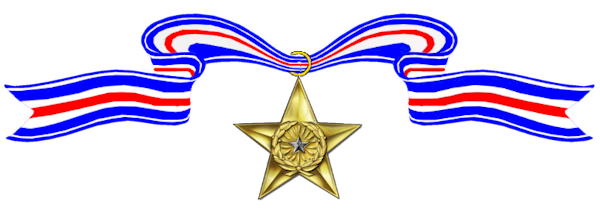William Shea graduated from the U.S. Naval Academy at Annapolis, Class of 1936. He retired as a U.S. Navy Captain.

–
Born:
,
Home:
,
Awards Received
-

Silver Star
-

Silver Star
-
Silver Star
Service:
United States NavyRank:
Lieutenant Commander [then Lieutenant]Division:
U.S.S. Trever (DD-339)Action Date:
June & July 1943
Commander South Pacific: Serial 001979 (September 28, 1943)The President of the United States of America takes pleasure in presenting the Silver Star to Lieutenant Commander [then Lieutenant] William Henry Shea, Jr. (NSN: 0-77079), United States Navy, for conspicuous gallantry and intrepidity as Commanding Officer of the U.S.S. TREVER (DD-339), a high-speed mine layer, in action against enemy Japanese forces in the Solomon Islands Area in June and July 1943. Although under continual threat of enemy submarine attacks and frequently subjected to severe aerial bombings and shelling by hostile shore batteries, Lieutenant Commander Shea successfully transported troops and supplies through extremely hazardous, Japanese-infested waters in support of the vital landing operations on Rendova Island and the subsequent occupation of the New Georgia Group, skillfully driving off the enemy attacks and bringing the TREVER through undamaged. The expert seamanship and aggressive fighting spirit displayed by Lieutenant Commander Shea contributed materially to the success of our forces in this area and were in keeping with the highest traditions of the United States Naval Service.
-
Silver Star
Service:
United States NavyRank:
CommanderDivision:
U.S.S. Bagley (DD-386)Action Date:
June 19 – 20, 1944
The President of the United States of America takes pleasure in presenting a Gold Star in lieu of a Second Award of the Silver Star to Commander William Henry Shea, Jr. (NSN: 0-77079), United States Navy, for conspicuous gallantry and intrepidity as Commanding Officer of the Destroyer U.S.S. BAGLEY (DD-386), operating as part of the screen for a formation of fast battleships of Task Force FIFTY-EIGHT, during action against enemy Japanese forces in the First Battle of the Philippine Sea, on 19 – 20 June 1944. When overwhelming forces of Japanese torpedo bombers maneuvered in over the area and launched their devastating strikes, Commander Shea skillfully maneuvered to meet the onrushing enemy and, hurling the full fighting power of his ship against the attackers, succeeded in breaking up the aerial formations before they could penetrate to our major Fleet units. His inspiring leadership, expert ship-handling and cool courage in the face of tremendous odds were essential factors in the excellent coverage provided his Task Force throughout this decisive engagement and reflect the highest credit upon Commander Shea, the gallant BAGLEY and the United States Naval Service.

